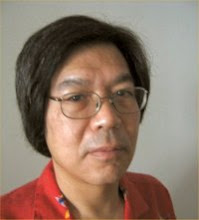A week of screenings, plus a few more art events. In addition, there were encounters with friends not seen in quite a while.
I'm starting to get back into seeing things. This past week: on HBO, the documentary "Pussy Riot - A Punk Prayer" by Mike Lerner and Maxim Pozdorovkin; "After Tiller", the Sundance Film Festival award-winning documentary by Martha Shane and Lana Wilson; two of the Hitchcock 9 (restored silent films directed by Alfred Hitchcock): "Blackmail" and "The Ring"; "Sing Me the Songs That Say I Love You: A Concert for Kate McGarrigle" a documentary of the 2011 Town Hall concert organized by the Wainwrights (Rufus, Martha and Teddy) in honor of their mother; going to the Whitney Museum to see the exhibits "Edward Hopper Drawings", "David Hockney: The Jugglers", "I, You, We" (went with my friend Vicki Patraka, whom i haven't seen in almost a decade); going to LIU Brooklyn's Humanities Gallery for the opening of Theodora Skipitares's exhibit "The Ionesco Project" (another friend i haven't seen in a long while); on CUNY-TV, Jonas Mekas's "Reminiscences of a Journey to Lithuania".
Right now, i'm staying up late to watch "Route 66", one of the Glenn Corbett episodes (the last season), guest starring Janice Rule and Susan Kohner as two rich young women in competition with each other. In the recent spate of Beat era evocations ("On the Road", "Kill My Darlings"), one problem is that the attempt is to recreate the Beat epoch because of some idea of sexual liberation/sexual freedom. But the actual effect of the Beat era was directly represented in the popular culture of the time (the late 1950s), even if distorted and diluted. It was there when writers like Jack Kerouac appeared on talk/variety shows like Jack Paar or Steve Allen; it was there when shows like "Johnny Staccato", "Mr. Lucky" and "Peter Gunn" had scenes set in smoky coffeehouses, with beatniks giving poetry readings; it was there when characters like Maynard G. Krebs (played by Bob Denver) were part of shows like "The Many Loves of Dobie Gillis" (the final declension of the Beats, from outlaw culture to the butt of the joke). Certainly, some vestige of the Beat aesthetic was there in "Route 66" with the two guys getting into a vintage Corvette and going on the road. Jack Kerouac definitely felt that, since he consulted with lawyers to find out about copyright infringement, since he felt that Stirling Silliphant's appropriation of his concept had devalued "On the Road".
But to try to recreate the Beat aesthetic now, there must be some powerful motivation, and not just nostalgia. There must be some semblance of the passion, the tumult, the intensity which provided the impetus for the Beats, and in so much of the recent Beat evocations, that's been missing. And without it, the Beats become as quaint as the Bloomsbury circle (another Bohemian epoch celebrated for sexual diversity, but quaint because everything is so civilized, so much so that there's no real sexual passion).


2 Comments:
Daryl! It's great having you back here. I've missed your musings. Your take on the "beat" films and TV shows is an example of what makes this site such an essential. Welcome back. -J
7:51 AM
Route 66 is a great jazz song which is one of my favorites. I'd never knew it has a movie taken from it.
I'm glad to pass by your blog and learn something rare and historical.
Kelly of KZ Audio Video
9:21 AM
Post a Comment
<< Home